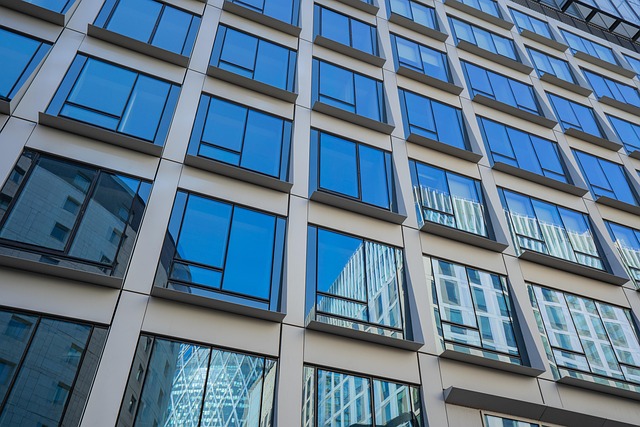Commercial air curtains are essential for temperature control and energy efficiency in commercial spaces like retail stores, warehouses, and lobbies. They act as barriers, preventing outdoor air infiltration, reducing HVAC load, and cutting energy costs. Heated options are ideal for colder climates, while energy-efficient models offer long-term savings. Proper installation is key to optimal performance, securing comfortable internal temperatures and minimizing energy loss in diverse commercial settings.
In the quest for comfortable and energy-efficient lobbies, commercial air curtains are emerging as a silent hero. These innovative temperature control solutions play a pivotal role in maintaining optimal environments, ensuring visitors experience balanced comfort year-round. This article delves into the science and benefits of quiet commercial air curtains, explores their crucial role in temperature management, and provides insights on effective selection and installation for enhanced lobby aesthetics and functionality.
- Understanding Commercial Air Curtains: Their Role in Temperature Control
- The Science Behind Quiet Air Curtains for Lobbies
- Benefits of Maintaining Lobby Temperature Balance
- Selecting and Installing Commercial Air Curtains Effectively
Understanding Commercial Air Curtains: Their Role in Temperature Control

Commercial air curtains play a vital role in maintaining temperature balance at various commercial entrances like retail doors systems, warehouse entrances, and even industrial air barriers. These innovative solutions act as effective entrance air barriers, preventing cold or hot outdoor air from entering indoor spaces, thereby enhancing HVAC efficiency. By creating an airtight seal around doors, heated air curtains or door air curtains ensure climate separation, significantly reducing energy consumption compared to traditional methods.
In today’s world, where energy saving technology is paramount, understanding the importance of commercial air curtains goes beyond temperature control. They contribute to a sustainable and cost-effective environment, making them indispensable for businesses in bustling settings. Whether it’s a lively lobby or a busy warehouse, these air curtains foster a comfortable climate while optimising the overall efficiency of HVAC systems.
The Science Behind Quiet Air Curtains for Lobbies

The science behind quiet commercial air curtains for lobbies revolves around creating a climate separation and energy-saving technology at commercial entrances. Unlike traditional door air curtains, these innovative solutions are designed to maintain HVAC efficiency while ensuring optimal temperature balance in public spaces. By acting as entrance air barriers, they prevent cold or hot air from escaping, reducing the workload on heating and cooling systems.
This advanced technology incorporates heated air curtains for retail door systems, warehouse entrances, and industrial air barriers, contributing to a more comfortable environment for folks navigating commercial spaces. The quiet operation makes them ideal for bustling lobbies, where aesthetics and functionality merge seamlessly, fostering a welcoming atmosphere while promoting sustainable practices.
Benefits of Maintaining Lobby Temperature Balance

Maintaining a balanced temperature in lobbies is more than just a comfort issue; it’s a key strategy for optimizing energy efficiency and overall building performance. Commercial air curtains, such as entrance air barriers or door air curtains, play a pivotal role in achieving this balance. By acting as effective industrial air barriers, these systems prevent cold or hot air from escaping through commercial entrances, warehouse entrances, or retail door systems, thereby enhancing HVAC efficiency.
This climate separation technique not only reduces the load on heating and cooling systems but also significantly cuts down on energy consumption. The use of heated air curtains or energy-saving technology in commercial spaces can lead to substantial savings, making it a practical and sustainable choice for businesses. Whether you’re managing a bustling retail space or a quiet warehouse, maintaining lobby temperature balance with commercial air curtains is a smart step towards a more efficient and environmentally friendly operation.
Selecting and Installing Commercial Air Curtains Effectively

Selecting and installing commercial air curtains effectively involves understanding your specific needs in terms of climate separation and energy saving technology. Commercial entrances, whether in retail stores, warehouses, or industrial settings, require robust door air curtains to maintain HVAC efficiency and create a comfortable lobby environment. When choosing the right solution, consider factors like the size of the opening, expected traffic flow, and desired temperature balance. Heated air curtains are particularly useful for colder climates, while energy-efficient models can significantly contribute to cost savings over time.
Proper installation is key to ensuring optimal performance. For instance, door air curtains should be securely mounted at the entrance to create an effective barrier against drafts and external conditions. Retail door systems and warehouse entrances benefit from these installations, as they help maintain a comfortable temperature balance inside while minimizing energy loss. Industrial air barriers, designed for harsh environments, can enhance overall HVAC efficiency by preventing unwelcome air infiltrations, thus making them essential components in maintaining a controlled internal climate.
Commercial air curtains have emerged as a game-changer in temperature control, offering a quiet and efficient solution for lobby environments. By understanding their role, the science behind their functionality, and the benefits of maintaining a balanced lobby temperature, businesses can make informed decisions. Effective selection and installation ensure optimal performance, creating a comfortable and welcoming space for customers and staff alike. Integrating commercial air curtains into lobby design is a strategic move that enhances overall space utilization and contributes to a more pleasant indoor experience.






